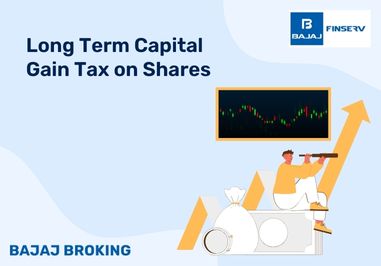BAJAJ BROKING
Retaggio Industries IPO is Open!
Open a Free Demat Account
Trade Now, Pay Later with up to 4x
Track Market Movers Instantly
What Is Sideways Market?
For aspiring traders seeking success in the financial markets, the ability to identify and navigate sideways market is a crucial skill. Understanding how these markets operate empowers traders to make informed decisions when buying and selling stocks and other securities for investment purposes. This comprehensive guide delves into the concept of sideways markets, shedding light on their characteristics, benefits, and effective trading strategies.
Also Read: Share Dilution
What is a Sideways Market?
A ‘sideways market’ meaning in stock market also known as a ‘range-bound market,’ is a market condition characterised by the absence of clear trends. During these periods, asset prices fluctuate, often with sharp movements, but they lack a discernible and sustained direction. Sideways markets exhibit traits of volatility and indecision, posing challenges for traders as they grapple with uncertainty regarding whether to adopt long or short trading positions. In such markets, price action appears to oscillate back and forth without apparent rationale or trend.
Typically, a sideways market denotes a phase in which an asset’s price remains within a defined range, displaying equilibrium. The duration of a sideways market varies, influenced by factors such as prevailing market sentiment and external news events that may impact prices. However, in general, these phases persist for no more than several weeks, making short-term trading strategies more favourable.
Despite the presence of both bullish and bearish sentiments in a sideways market, individual traders may experience reduced profitability due to heightened trading costs. Active traders may choose to limit their trading activities during such phases, as they struggle to capitalise on either bullish or bearish movements. Since most assets do not exhibit strong and sustained upward or downward trends over extended periods, it is not uncommon for markets to periodically enter phases of inertia with limited volatility. During these times, some investors believe that new information exerts minimal influence on prices.
Also Read: Bollinger Bands
Benefits of a Sideways Market
Sideways stock markets are a frequent occurrence and may seem perplexing to investors new to the financial markets, as they defy traditional expectations of how stocks behave during typical economic cycles. However, experienced traders recognise several advantages associated with trading in these market conditions:
1. Predictable Price Action: Sideways markets, characterised by trading within a defined range, yield more predictable price movements than markets experiencing trending phases interspersed with consolidation.
2. Reduced Volatility: Prices in sideways stock markets tend to exhibit lower volatility compared to active trending markets. Price swings during sideways phases are typically shorter in duration.
Strategies for Sideways Markets
To fully harness the potential of a sideways market, traders can employ various strategies tailored to this unique environment:
1. Wait and Watch: Recognising that sideways stock markets can be challenging for traders seeking quick profits, some opt for a more cautious approach by adopting a wait-and-watch stance. They maintain open positions but refrain from taking excessive risks.
2. Break-Even Mode: Day-traders often prioritise minimising overall losses, even if it means sacrificing some gains from winning trades. This approach involves actively managing trades to reach break-even or reduce losses.
3. Wider Stop-Losses: Traders acknowledge that sideways markets do not typically offer substantial profits. Consequently, they employ larger stop-loss orders to exit positions quickly, limiting potential losses.
4. Adjust Time Frames: For short-term traders accustomed to executing multiple daily trades, a choice arises between expanding their time frames or refraining from trading altogether. Those who opt for extended time frames may consider entering long positions only when a bullish candlestick pattern emerges on the daily chart.
Advantages of Trading in a Sideways Market / Horizontal Drift
1. Precise Entry and Exit Points: In a sideways market, clear support and resistance levels are typically established, eliminating any uncertainty regarding entry and exit points. For instance, traders can initiate a purchase when a security tests the support level and sets a profit target at the resistance level. By placing a stop-loss order just below the market’s support level, they can minimise potential losses.
2. Risk Management and Control: Sideways market trading often involves pursuing smaller profits, resulting in shorter trade durations, typically lasting only a few days or weeks. This approach reduces the exposure to adverse market conditions, such as bear markets or unexpected events like terror incidents. Traders can also close positions before significant company announcements, such as earnings reports, and re-enter when the security’s price returns to the support level.
Also Read: Risk Management In Stock Market
Drawbacks of Trading in a Sideways Market / Horizontal Drift
1. Increased Transaction Costs: Sideways market trading typically offers more frequent trading opportunities compared to trend trading. As a security’s price moves within a defined range, traders may repeatedly buy at support and sell at resistance. However, this frequent trading activity generates commission expenses that can erode a trader’s overall profits. Range-bound strategy traders lack the luxury of letting profits accumulate to offset these commission charges.
2. Time-Intensive: Actively buying and selling securities to capitalise on a sideways market’s profit potential can be a time-consuming endeavour. Traders must make precise decisions for both entry and exit points and establish stop-loss orders. Once a trade is initiated, it demands constant monitoring to ensure accurate execution. To address this, many traders opt to automate their trading strategies, sparing them the need to be constantly in front of their screens.
To Summarise
In conclusion, while sideways markets may witness brief bursts of volatility, these movements typically have short-term repercussions and do not significantly impact long-term returns. Traders who maintain discipline, adaptability, and a comprehensive understanding of industry performance during different phases of an economic cycle can potentially reap substantial rewards when navigating the intricate terrain of a sideways market. Success in these conditions demands an in-depth comprehension of market dynamics, enabling traders to seize opportunities and manage risks effectively.
Share this article:
Read More Blogs
Our Secure Trading Platforms
Level up your stock market experience: Download the Bajaj Broking App for effortless investing and trading













